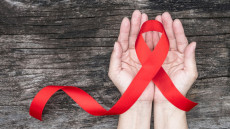- Most people find comfort in water, whether it's a nice shower to start the day, a swim to cool off, or a drink to cool down after working out. But for those living with aquagenic pruritus, things are different, water is anything but soothing.
Most people find comfort in water, whether it's a nice shower to start the day, a swim to cool off, or a drink to cool down after working out. But for those living with aquagenic pruritus, things are different, water is anything but soothing. This strange and uncommon condition causes intense discomfort when it comes in touch with water, no matter how clean or warm it is.
Aquagenic pruritus doesn’t leave visible marks on the individual's skin. There are no rashes, welts, or swelling. Instead, sufferers experience a sudden onset of prickling, burning, or stinging sensations that can last from several minutes to over an hour.
The symptoms usually start as soon as the person gets wet, and they can be brought on by washing, sweating, rain, or even tears. The underlying cause of aquagenic pruritus remains hidden. In some cases, it’s linked to a blood disorder called polycythemia vera, which causes an overproduction of red blood cells.
However, many individuals with aquagenic pruritus have no identifiable medical condition, making diagnosis difficult. Researchers suspect that the itching may stem from hypersensitive nerve endings in the skin or abnormal histamine responses, but no definitive mechanism has been confirmed.
Living with this condition can be socially and emotionally taxing. Because the skin appears normal, others may dismiss the symptoms as psychological or exaggerated. People often feel alone and frustrated because there isn't enough visible proof.
Read More
Daily routines become complicated, showers are dreaded, exercise is avoided, and rainy days are a source of anxiety. Some individuals even limit their fluid intake to reduce sweating, which can lead to dehydration and other health issues.
Treatment for Aquagenic pruritus is limited and varies in effectiveness. The drug antihistamine is often used to treat allergic responses. It can help some people, but not everyone.
Others find that applying thick moisturizers or barrier creams before water exposure helps reduce symptoms. Phototherapy controlled exposure to ultraviolet light is another option that has helped some patients manage their condition.
Despite its rarity, aquagenic pruritus may be more common than reported. Many people live with unexplained itching after water contact and never seek medical advice, assuming it’s just dry skin or a minor irritation. Awareness to the public could lead to earlier diagnosis and better support for those affected.
In a world where water is essential to life and wellness, aquagenic pruritus turns a basic necessity into a daily challenge. For those who live with it, every drop is a reminder of a condition that’s invisible to the eye but impossible to ignore.
Stay connected with us on WhatsApp and X for instant updates and breaking news as it happens.












